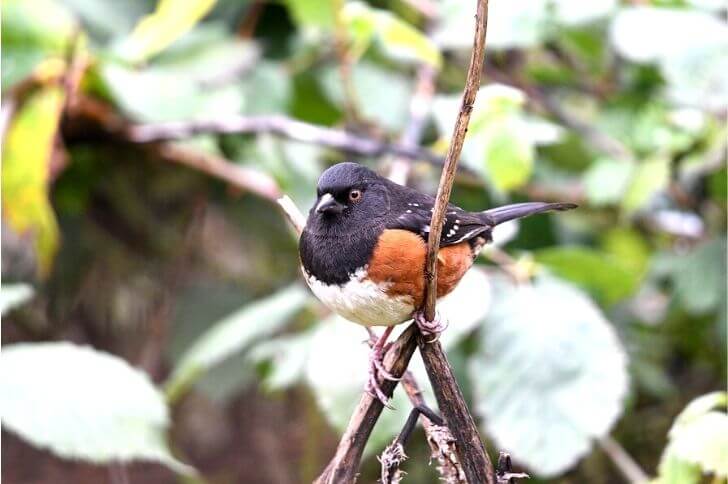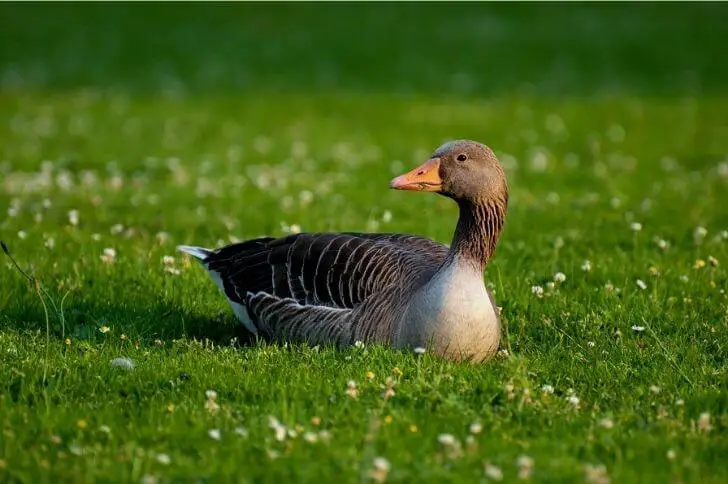There are more than 100 species of birds in San Antonio, Texas. The city’s mild climate and diverse habitats support a large variety of birds throughout the year.
San Antonio is home to several birding hotspots, including the San Antonio Botanical Garden and the Mitchell Lake Audubon Center. Birders of all levels can enjoy watching and photographing the many different species of birds that call San Antonio home.
And below is a list of common wild birds in San Antonio to help you identify bird species on your next birding tour.
List of Birds in San Antonio
1. Golden-cheeked Warbler

source: erstex
The golden-cheeked warbler is a small songbird that is found in the woodlands of San Antonio, TX. The bird gets its name from the distinctive yellow patches of feathers on its cheeks. This small warbler is an important part of the ecosystem because it helps to control insect populations.
Identification:
Golden-cheeked warblers are yellow, black and white. Females have the same body patterns as the males but have duller coloring. On average, the adult golden-cheeked warbler is 4.7-5.1 inches long and spans 7.5-8.3 inches.
Other facts:
When do golden-cheeked warblers mate? Their breeding season starts from March through June. Females take on the duty of finding the perfect nesting spot and building a nest. You can spot their nests on oaks and ashe junipers.
Each nesting season, golden-cheeked warblers raise one or two broods; each consisting of 3-5 warbler babies.
These small San Antonio birds have been listed as an endangered species. To save the golden-cheeked warbler, we need to protect and restore its natural habitat.
2. Great-Tailed Grackles
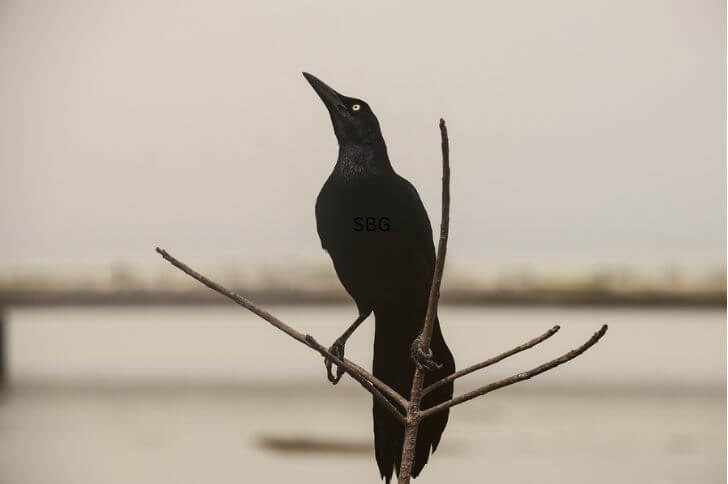
Great-tailed grackles are a species of bird that are resident breeders in many parts of North America including San Antonio.
Identification:
The bird is named for its long tail. The great tailed grackle is a blackbird, and males of the species are particularly shiny. They also have stunning yellow eyes.
Female great-tailed grackles are a dark brown with a flat head. These birds are about 18 inches long and are a member of the family icteridae.
Other facts:
The bird is known for its loud call, which sounds like a metallic click. Great tailed grackles are found in open habitats. The birds primarily eat insects, but they will also eat other small animals and fruits.
When can you see great-tailed grackle babies? Between March and July when these birds are nesting. If you live near San Antonio zoo, you can visit during this period and watch their nesting habits. Learn about more about other birds with blue heads.
3. Northern Cardinal

Found all-year round in Texas, these birds are a resident breeder in the San Antonio Area. Northern cardinals add color and intrigue to nature.
Identification:
The male cardinal is a brilliant red with a black mask, while the female is a more subdued reddish-brown. Both sexes spot a vibrant red bill and noticeable crest. Note their beady eyes.
Other facts:
Do northern cardinals visit backyards? You can attract them to your yard using sunflower seeds. During hotter months, we recommend you add some cardinal bird baths to help cool them.
Apart from backyards, cardinals are also found in wooded areas throughout Texas. These birds are seed eaters, and they will also eat insects and fruits.
Cardinals are monogamous. They mate for life. Both the male and female help to build the nest and care for the young chicks. Cardinals typically lay 3-4 eggs per clutch. Northern cardinals are not considered to be endangered at this time.
4. Cattle Egret
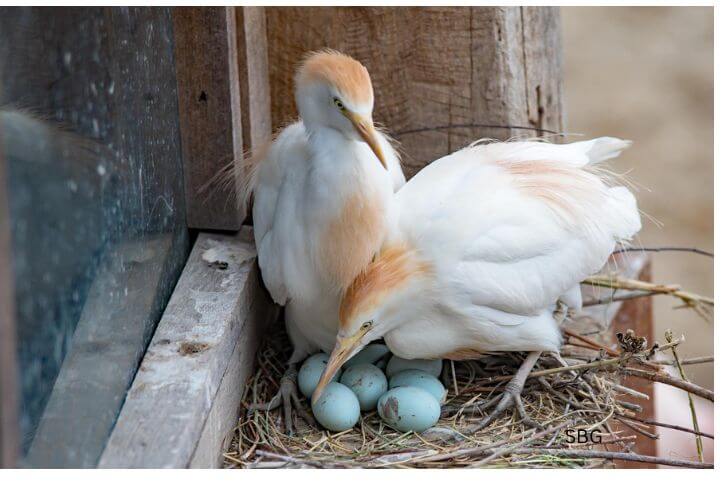
Cattle egrets are small white herons. They are a member of the heron family Ardeidae. The cattle egret is found in warm regions. It is a wading bird that feeds on insects, frogs, and reptiles.
Identification:
The cattle egret has a white body with orange-buff plumage. Its head is small and the bill is short and thick. The legs are long and thin. Toes are tipped with black claws.
An adult averages 18-22 inches in length and has a span of up to 37.8 inches.
Interesting facts:
Cattle egrets breed in colonies near water. The nest is a platform of sticks built in trees or shrubs. The female lays 3-5 eggs which are incubated for 21-26 days. Cattle egret babies stay with their parents for up to 21 days. During this period, they are fed by their parents and shed their down feathers.
Cattle egrets are a food source for great horned owls, raccoons and domestic dogs.
Related Read: Check some birds of San Diego
5. Red-Shouldered Hawk

Are there any blackbirds in San Antonio? Yes, there are quite a number of black bird species in Texas. Red-shouldered hawks are found throughout the county.
Identification:
This bird is a medium size hawk. The adult is 16.9-24 inches long with a span of up to 43 inches. Their body mass ranges from 17-27.3 oz. They are almost the same size as the American crow.
Overall, the bird has a small head and a slim build. Its upperparts have a checkered brown and black appearance. Underparts are brown barred with white. Note its short curved bill and sharp talons.
Other facts:
Red-shouldered hawk populations are stable. They start nesting in April lasting through July. They raise one brood per season. Females lay 3-5 dull white eggs with brownish blotches.
Incubation lasts up to 40 days and the hawk babies stay with their parents for about 50 days and then leave the nest. These birds of prey of San Antonio are known for their “kee-aah” calls.
6. Black-bellied Whistling-Duck
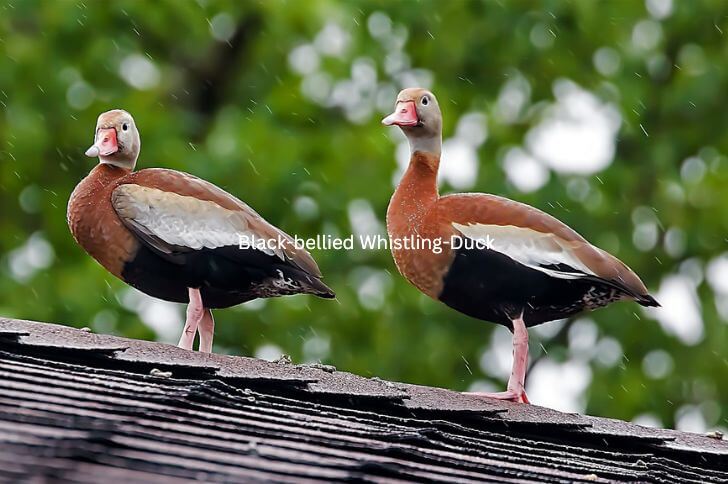
The black bellied whistling duck is a species of perching duck. They are non-migratory birds but in Texas, they are known to leave the state during colder months and move to South America where it is warmer.
Identification:
The adult bird has a black belly, gray face and the rest of the body has chestnut feathers. Notice the pinkish-red webbed feet and broad red bill. Juveniles black-bellied whistling-ducks are duller than the adults. In terms of size, they are almost the same size as the cattle egret above; about 20 inches in length.
Other facts:
Black bellied whistling ducks are primarily herbivorous, feeding on aquatic plants, seeds, and insects. These ducks live in small flocks and nests are typically built in tree cavities or on the ground near water.
This striking bird is easily recognized by its unique call. These ducks are vocal birds that often make loud whistling sounds. The male’s call is a higher pitch than the female’s.
7. Belted Kingfisher
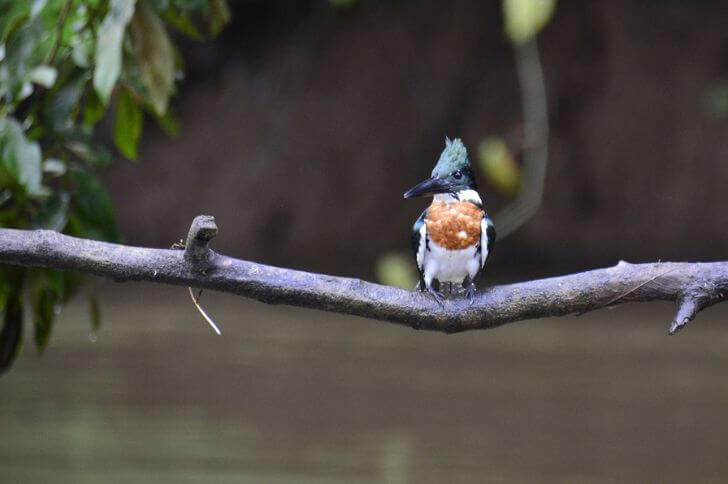
Where can you watch belted kingfishers in Texas? Along the San Antonio river. These small stunning birds favor habitats near lakes and rivers.
Identification:
In San Antonio, tx, you can find belted kingfishers during their non-breeding season; July to March. To identify be on the lookout for a medium-sized bird. The adult bird has blue-gray plumage overall and a white throat and belly.
Females have a chestnut belly band that’ll help you tell the sexes apart. Both sexes spot a crest; males’ crest is neater.
Other facts:
The kingfisher gets its name from its habit of perching on branches over water and catching fish with its bill.
This bird of San Antonio is a member of the family alcedinidae, which contains other kingfishers. Kingfishers are solitary birds that nest in cavities in trees or banks. The female lays 4-8 eggs, which hatch after about three weeks.
8. Black-chinned Hummingbird
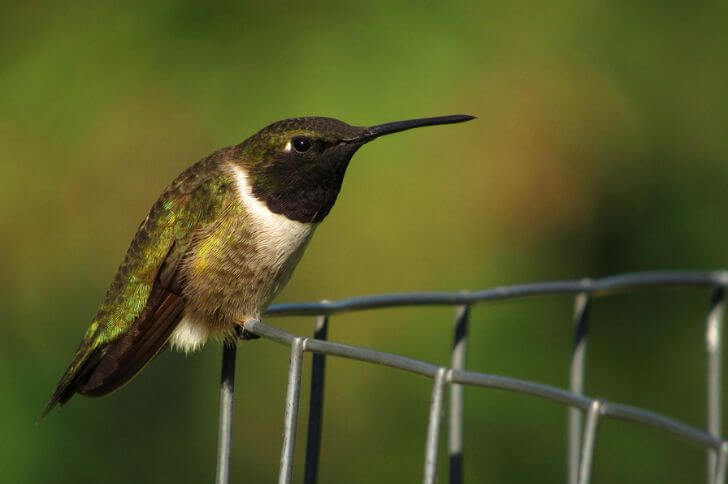
Are black-chinned hummingbirds rare? No, these little birds are pretty common in parts of the United States. In San Antonio, these birds are common during summer months.
Identification:
How can you tell a black-chinned hummingbird? These birds are small, with a body length of only 3-4 inches. They have iridescent feathers that range in color from green to purple. The male bird has a black chin and throat, while the female has a gray chin.
Interesting facts:
These birds are attracted to bright flowers, and they feed on nectar using their long beaks. They also eat insects, which they catch in midair. Black-chinned hummingbirds are important pollinators of many plant species.
These birds are at risk from habitat loss and climate change. You can help by planting native flowers in your garden and avoiding the use of pesticides.
9. Eastern Bluebird

With their bright plumage and low-pitched songs, Eastern bluebirds are small birds of San Antonio Texas that prefer open country.
Identification:
They have distinctive features that ensure they standout from other avian species.
The male adult has blue upperparts, a rusty-brown breast, and a white belly. Females are grayish-brown with a white belly. These birds are 6.3-8.3 inches long.
Other facts:
It feeds on insects and berries. The male eastern bluebird often perches on branches and sings to advertise his territory. Nesting pairs excavate cavities in trees or build nest boxes.
The eastern bluebird has declined in numbers due to habitat loss and competition from introduced species such as the house sparrow. However, its populations have rebounded in recent years due to conservation efforts.
10. Northern Mockingbird

The northern mockingbird is a migratory bird that breeds in North America. It is the state bird and is found all-year round in San Antonio. It is a member of the Mimid family and is closely related to the gray catbird, black catbird, and thrashers.
Identification:
The northern mockingbird is a medium-sized songbird with grayish-brown upperparts and white underparts. It has a long tail and wings, and a black bill.
Other facts:
The northern mockingbird is an accomplished singer, and its songs are often mimicked by other birds.
It is found in open woodlands, farmland, and urban areas. This song bird of Texas feeds on insects, berries, and fruits. It nests in trees or shrubs, usually close to the ground.
11. American White Pelican

Majestic and beautiful, American white pelicans are large waterbirds of Texas. How can you identify this waterbird?
Identification:
With a wingspan of up to 9 feet, these birds are one of the largest flying birds in the world. The American white pelican is mostly white, with black flight feathers and a yellow bill. These birds measure 50-65 inches.
Other facts:
These birds are social creatures and often gather in large flocks. They are expert fishers and use their large bills to scoop up fish from the water. The American white pelican is an amazing bird that is sure to bring delight to any birdwatcher.
12. Couch’s Kingbird
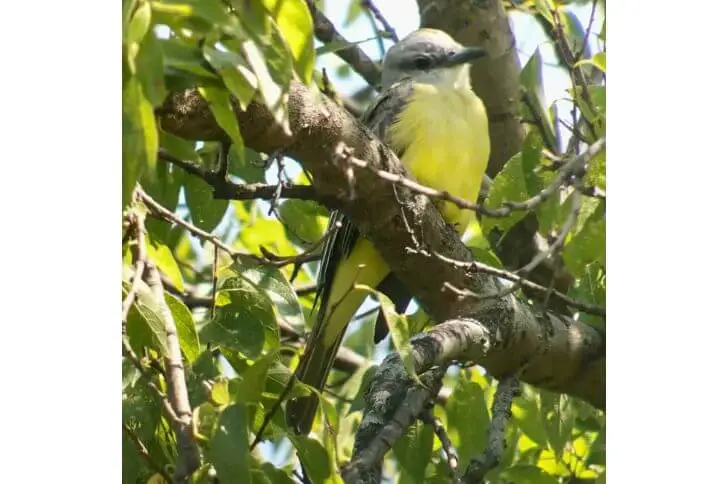
source: jellyfishmambo
Seen a yellow and gray bird in your yard? Mostly found in Southern Texas and here is what you need to identify these small birds.
Identification:
Couch’s kingbird is a medium-sized bird that is about 7 inches long. The adult has a gray head, white throat, and is yellow below. Notice its long, notched tail. The bill is short and black.
Other facts:
The Couch’s kingbird breeds in open areas with scattered trees, often near water. The nest is built in a tree or shrub, and consists of twigs, leaves, and grasses. The female lays 3-5 eggs, which are incubated for 14 days. The young birds fledge at 18-24 days old.
13. Black-crested Titmouse
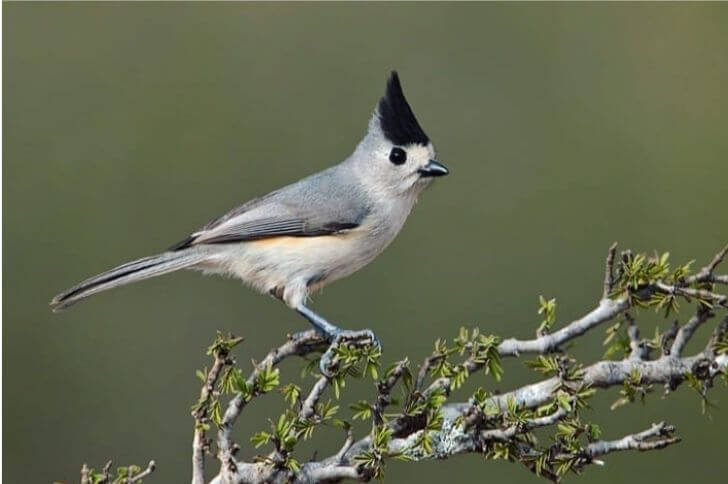
source: animallover.d
Often seen on fence posts, black-crested titmouse are small passerine birds that nest between March and April.
Identification:
The bird has a gray head with a black crest, and its back and wings are gray. It is whitish below. In size, it’s the same size as the black-capped chickadee.
Other facts:
The black-crested titmouse is a beautiful bird that is enjoyed by birdwatchers and nature lovers alike. In March to April you can see their nesting habits. They’ll raise one or two clutches if there is enough food.
Females do most of the nest construction, lay speckled eggs and incubate them for two weeks.
14. Lincoln’s Sparrow

Named after Thomas Lincoln, these small birds of Texas are secretive and thankfully they’ve been studied for years, giving us a glimpse into their everyday life.
Identification:
Lincoln’s sparrow is a small bird with a brown streaked back and white belly. It has a short, stout beak and is often seen in open fields or near water. It averages 5.1-5.9 inches in length making them smaller than the northern cardinal but larger than the black-chinned hummingbird.
Other facts:
The bird is a migratory avian species. It can be found in San Antonio during its non-breeding months. They favor forest edges and fields. They mainly consume moths, caterpillars, and beetles.
15. Painted Bunting
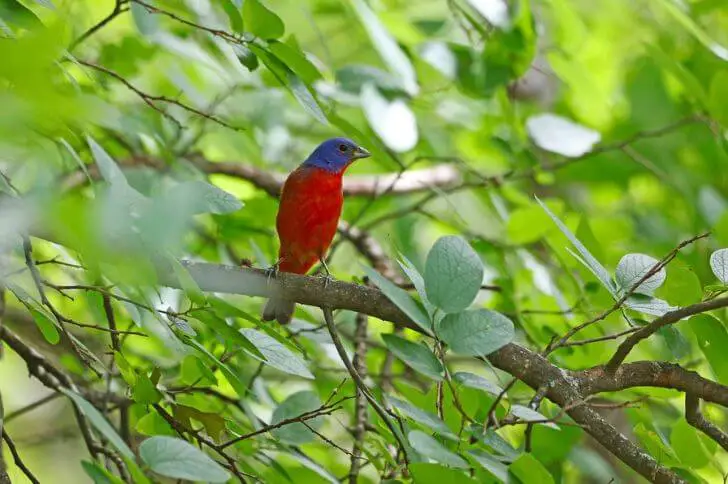
Painted bunting is one of the most beautiful songbirds in Texas. They are easy to identify and attract.
Identification:
The male has a blue head, green upper back, and red lower back. Also males have red underparts and a gorgeous eyering. The female is less brightly colored, with green-yellow plumage, a pale eyering and bill. They are about the same size as the black-crested titmouse.
Other facts:
They breed in open woodlands and scrublands, and build their nests in shrubs or trees. These birds eat mostly insects, but will also feed on seeds and berries. The painted bunting is declining in numbers due to habitat loss and fragmentation.
FAQs
Where can you go birding in San Antonio?
You can go bird watching in:
- Brackenridge park
- Mitchell Lake Audubon Center
- San Antonio zoo
- Bamberger Nature Park
- Braunig Lake
What are the most common birds in San Antonio?
Two birds are common in this region, the Northern cardinal and Northern mockingbird.
What are the noisy birds of San Antonio?
Great-tailed grackles are known to produce loud chatters which can be a nuisance.
Sources:
https://en.wikipedia.org/wiki/Painted_bunting
Hi fellow bird watcher. Welcome to our small corner of the world. At the spanishbirdguides.com our mission is to share with other bird watchers the things we love about birds, where to go bird watching within the United States, and more. I’d also love to hear from you. Feel free to contact me about your bird watching escapades, share videos, photos and more.
